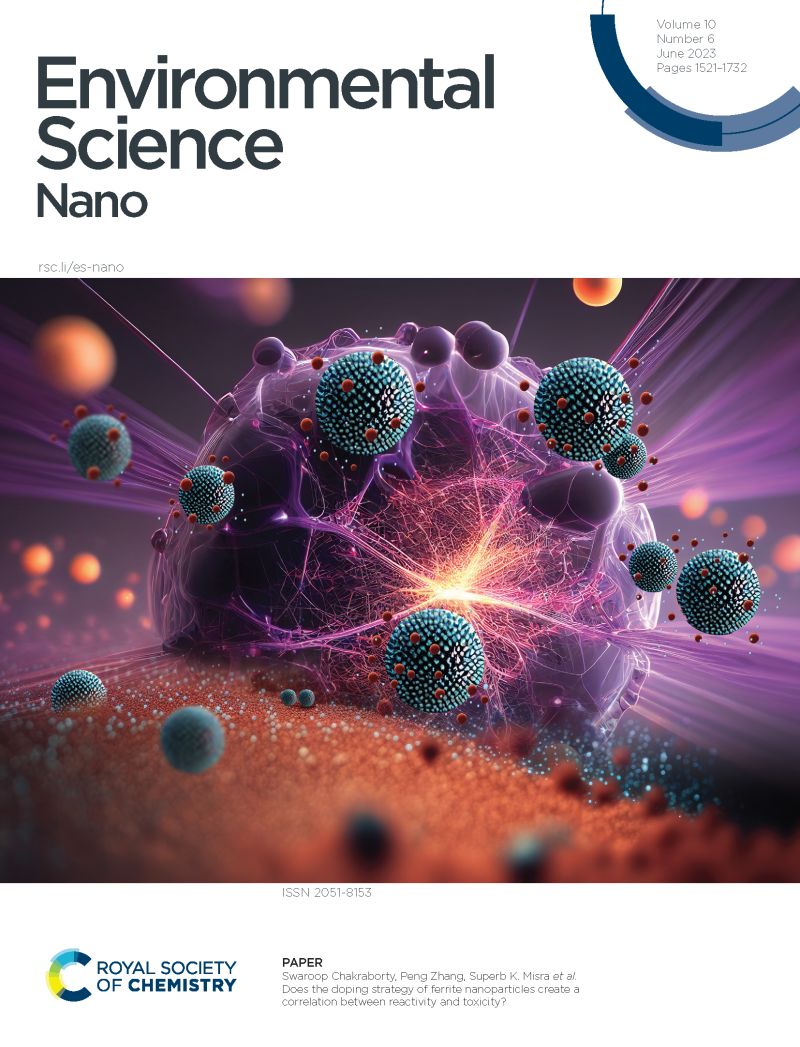蒙脱土负载纳米过氧化钙作为减轻浅湖甲烷排放的有效材料
IF 5.8
2区 环境科学与生态学
Q1 CHEMISTRY, MULTIDISCIPLINARY
引用次数: 0
摘要
浅湖是甲烷(CH4)排放的重要来源,甲烷是一种随着富营养化而加剧的温室气体。目前,湖泊生态系统的地球工程材料主要用于控制富营养化和去除污染物,对减少CH4排放的关注有限。本研究以负载纳米过氧化钙(nanoCaO2@MMT)的蒙脱土(MMT)为复合材料,研究其对减少CH4排放和营养负荷的影响,并通过中生态培养实验探讨其潜在机制。结果表明:nanoCaO2@MMT使表层沉积物中CH4浓度降低高达69.4%,水柱中总氮(TN)和总磷(TP)浓度分别降低高达80.3%和68.6%。添加nanoCaO2@MMT后,CH4生产电位(MPP)显著降低,而CH4氧化电位保持稳定。高通量测序显示,在添加nanoCaO2@MMT后,原核微生物群落发生了实质性变化,而产甲烷和产甲烷营养群落基本保持稳定。该研究证实nanoCaO2@MMT有效地减轻了CH4排放和养分负荷,突出了其作为多目标协同地球工程材料在浅湖恢复中的未来应用潜力。本文章由计算机程序翻译,如有差异,请以英文原文为准。

Montmorillonite loaded with nano calcium peroxide as an effective material to mitigate methane emission in shallow lakes
Shallow lakes are significant contributors to methane (CH4) emissions, which is a greenhouse gas that intensifies with eutrophication. Currently, geoengineering materials in lake ecosystems are mainly used for eutrophication control and pollutant removal, with limited focus on reducing CH4 emissions. Here, a composite material, montmorillonite (MMT) loaded with nano calcium peroxide (nanoCaO2@MMT), was developed to study its effect on mitigating CH4 emissions and nutrient loading and to explore the potential mechanisms through a mesocosm incubation experiment. Results showed that nanoCaO2@MMT reduced CH4 concentration in the surface sediment by up to 69.4% and decreased total nitrogen (TN) and total phosphorus (TP) concentrations in the water column by up to 80.3% and 68.6%, respectively. The CH4 production potential (MPP) was reduced significantly while the CH4 oxidation potential remained stable with the addition of nanoCaO2@MMT. High-throughput sequencing revealed substantial shifts in the prokaryotic microbial community following the addition of nanoCaO2@MMT, while methanogenic and methanotrophic communities remained largely stable. This study verified that nanoCaO2@MMT effectively mitigates both CH4 emissions and nutrient loading, highlighting its potential for future applications as a multi-objective synergistic geoengineering material in shallow lake restoration.
求助全文
通过发布文献求助,成功后即可免费获取论文全文。
去求助
来源期刊

Environmental Science: Nano
CHEMISTRY, MULTIDISCIPLINARY-ENVIRONMENTAL SCIENCES
CiteScore
12.20
自引率
5.50%
发文量
290
审稿时长
2.1 months
期刊介绍:
Environmental Science: Nano serves as a comprehensive and high-impact peer-reviewed source of information on the design and demonstration of engineered nanomaterials for environment-based applications. It also covers the interactions between engineered, natural, and incidental nanomaterials with biological and environmental systems. This scope includes, but is not limited to, the following topic areas:
Novel nanomaterial-based applications for water, air, soil, food, and energy sustainability
Nanomaterial interactions with biological systems and nanotoxicology
Environmental fate, reactivity, and transformations of nanoscale materials
Nanoscale processes in the environment
Sustainable nanotechnology including rational nanomaterial design, life cycle assessment, risk/benefit analysis
 求助内容:
求助内容: 应助结果提醒方式:
应助结果提醒方式:


